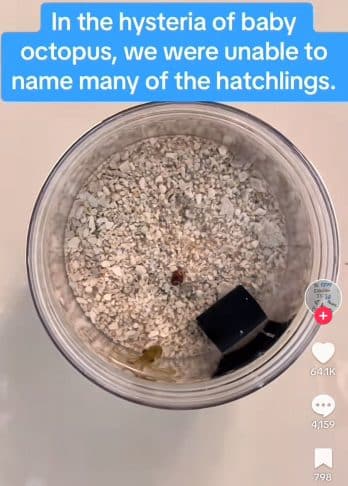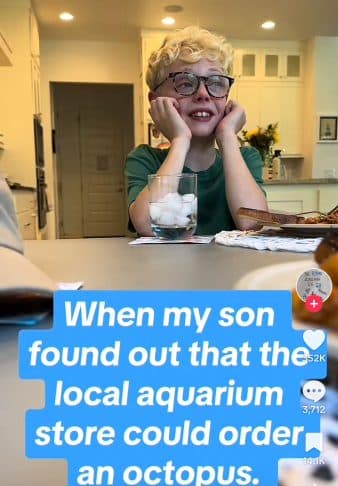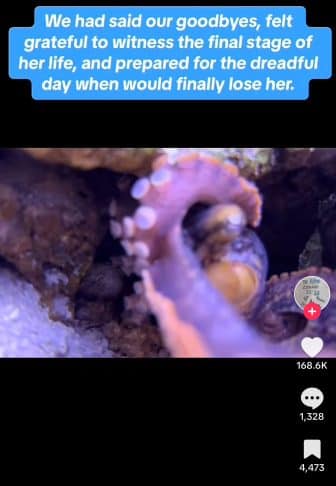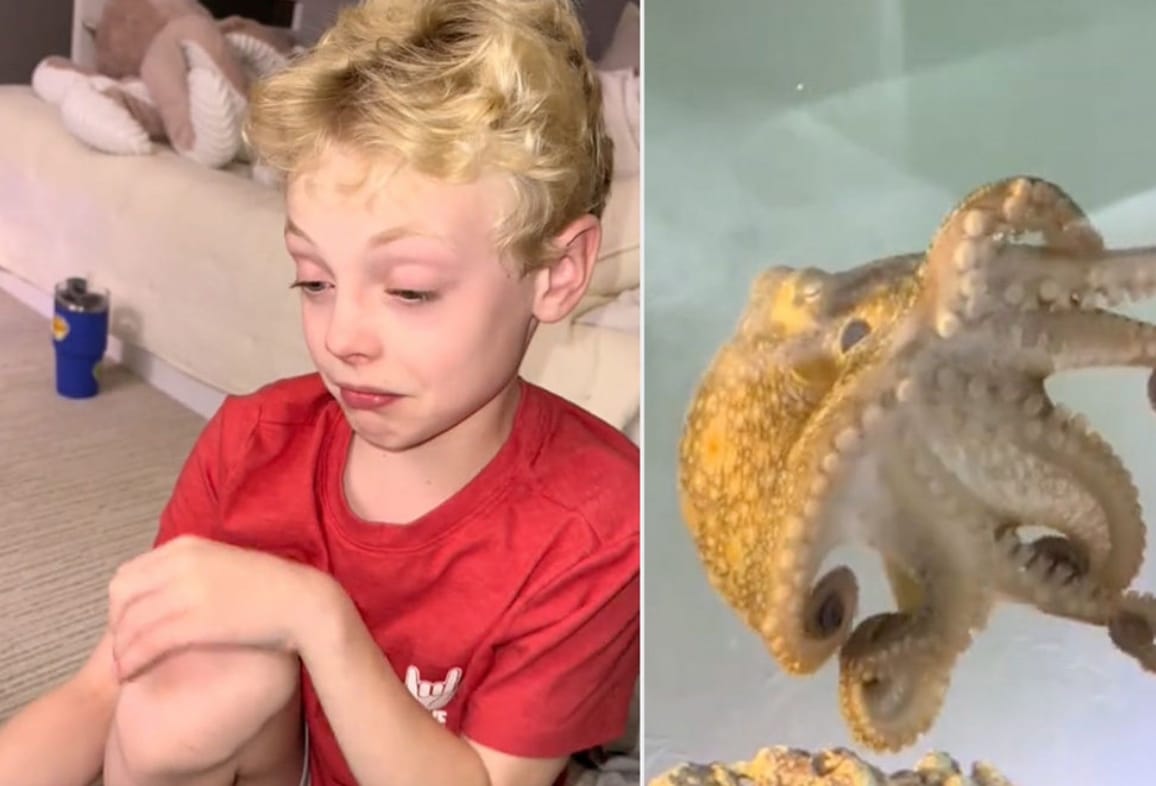“He’s always been infatuated with marine biology, especially octopuses. For most birthdays and holidays, he would ask for a pet octopus,” the proud dad tells PEOPLE exclusively.
“We always laughed it off. We’d replace it with a stuffed octopus or a toy octopus, but as time went on, he persisted — over many years. We realized this wasn’t something he was just going to forget.”

Earlier this year, Cameron reached out to a local pet store to inquire about the feasibility of buying an octopus.
“They told me it’s not common. You have to make sure that it’s done right and that you’re responsible about it, but theoretically, it can be done. So I got to work and did a lot of research, found some reputable websites, some experts and the rest is kind of history.”
Setting up a suitable environment for an octopus proved challenging, especially in Oklahoma, where the family resides.
“The habitats required for these species aren’t just your run-of-the-mill saltwater tanks. It requires some additional components that ensure that it’s a safe, suitable environment for the octopus,” Cameron says.

Once they were ready, Cameron and Cal brought home the two-spot (also known as bimac) octopus, which the 9-year-old named Terrance. For the first two months, they were engrossed in learning everything it takes to keep Terrance happy and healthy. Then, they were taken aback when the octopus started acting unusually.
“Terrance was very interactive and loved to be visible, with us and involved in the action. So for her to hide out in a cave for a few days straight was extremely unusual,” says Cameron.
Cameron started reaching out to their expert resources, noting, “You can’t just take an octopus to the local vet.” They learned that Terrance was actually female and that she had laid eggs.
In total, Terrance laid “between 40 and 60 eggs,” with Cameron sharing, “At one point, we had 50 babies in their tiny, little containers that we had actually kept alive for a week. So, at one point, we were feeding 50 babies at once.”

It’s been 60 days since Terrance’s babies began to hatch. Not only is she continuing to do well, but so are a good number of her little ones.
“We’ve been able to keep half of them alive,” Cameron explains.
Terrance’s babies will remain with Cameron and Cal until they’re ready to move on to more appropriate homes.

